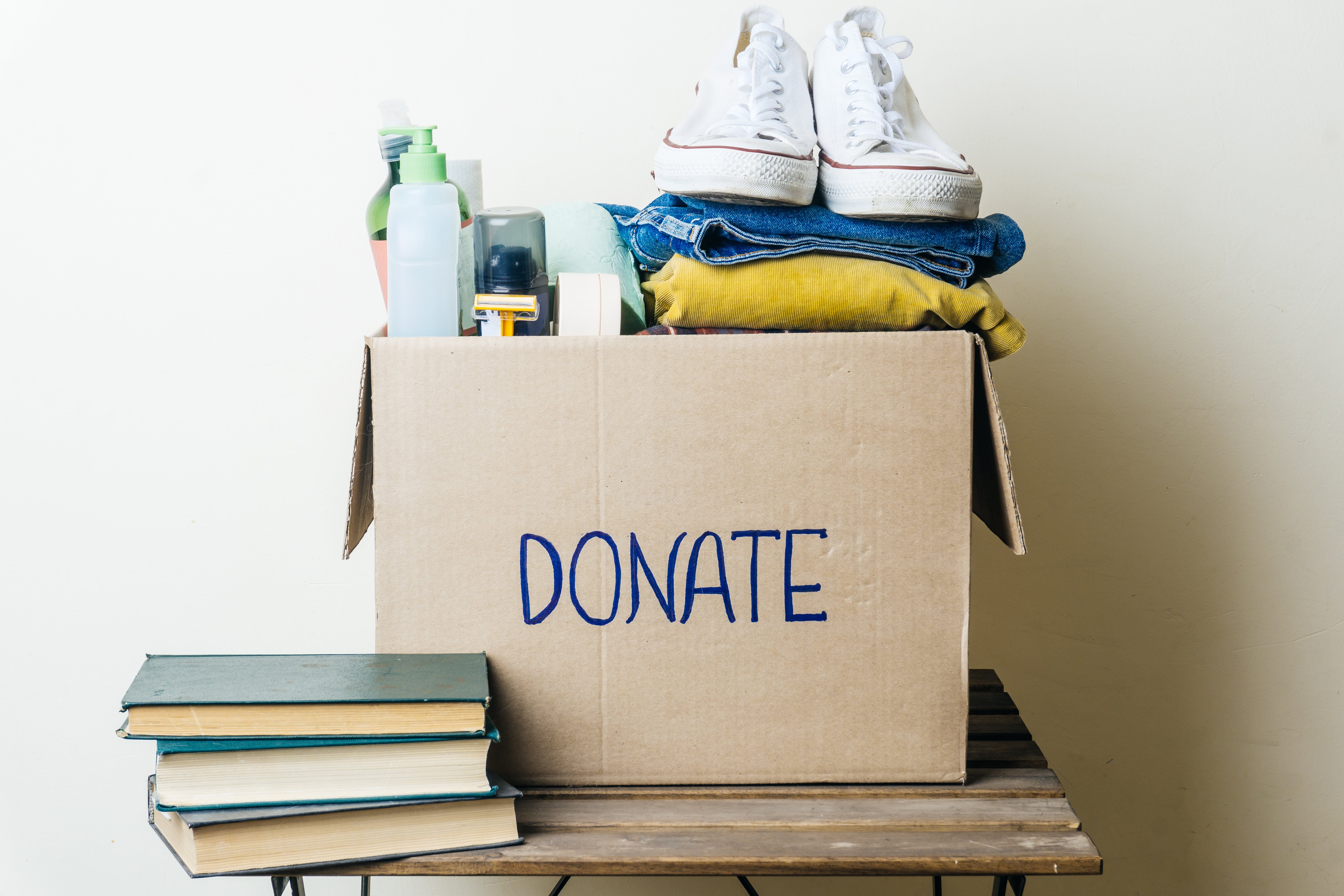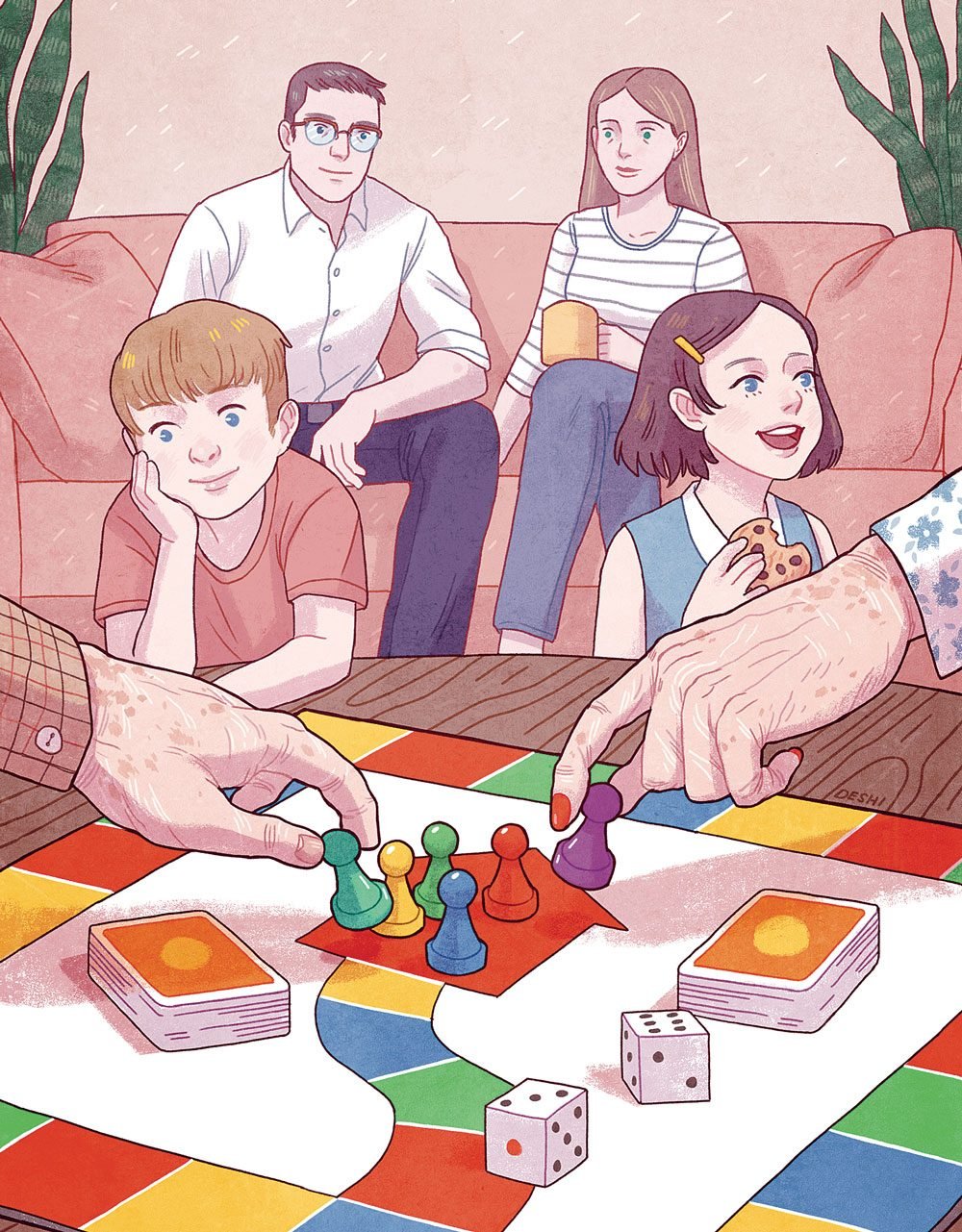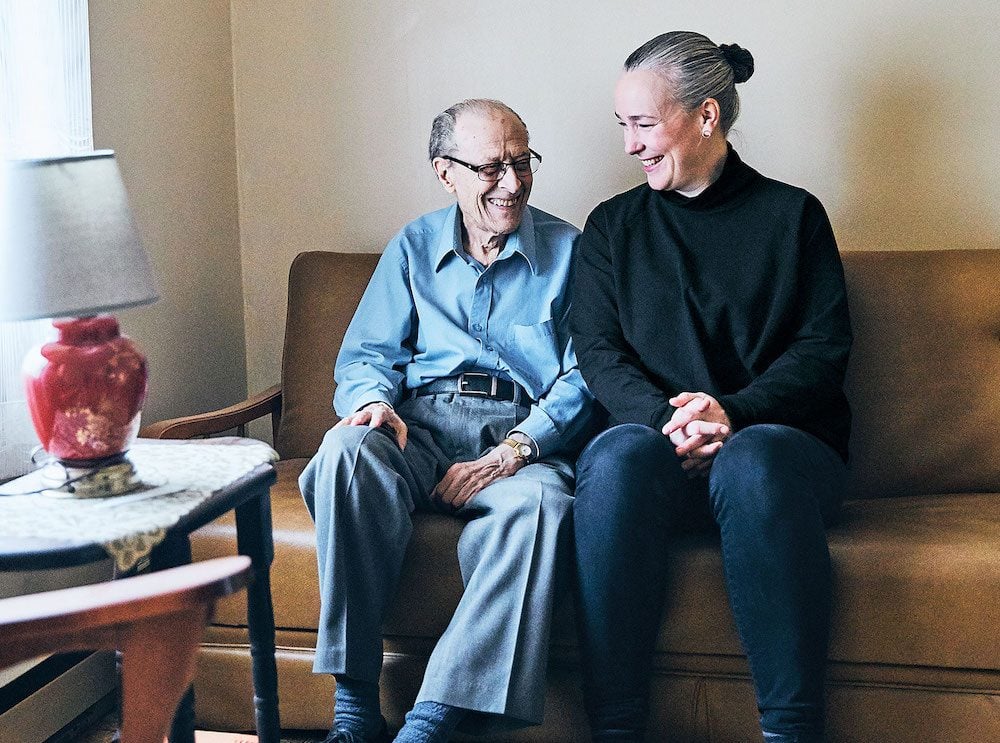A childhood toy’s plea
I cannot believe it has come to this. But consistently plummeting sales have forced my hand (metaphorically, as I do not have literal hands). I write to you (again, without hands) as a concerned Magic 8 Ball, urging you to reconsider your dependence on Google for answering all questions, when I am clearly the superior alternative.
As a novelty item invented in the 1950s, I am uniquely qualified to give up to 20 possible responses to any yes or no questions you may have about life, love and the universe in general.
For example:
“Should I propose to my girlfriend of six months?”
Ask again later.
“Can I drink from this carton of milk one day past its expiration?”
You may rely on it.
“Is Outlook a good choice to use for my personal email?”
Outlook not so good.
Imagine googling the answers to those questions. Ha! You’d be so overwhelmed by the options that you would inevitably watch nine hours of YouTube hedgehog videos instead of coming to a conclusion. Prolonged screen time is bad for your eyesight; it is decidedly so. Prolonged time with me, your steadfast and mystical Magic 8 Ball, is good for your inner eye. Why lose vision when you can gain visions?
Google may help you prevent identity theft, but can it save you from petty theft? Consider the following scenario:
Would-be mugger: “Give me your phone, which has Google on it.”
You: “I don’t have a phone or Google. I simply have this Magic 8 Ball.”
Would-be mugger: “No phone? Your circumstances are clearly dire. I’ll be on my way.”
Alternatively, you could just throw me at him as a self-defence tactic.
If you shake me, not only do you enhance your grip strength and gross motor skills, you also always get an answer to a question that you may or may not have been asking. If you shake Google, you are going to end up with a broken laptop.
Can Google fall out of your pocket and roll down a busy side street, causing you to look down as you try to catch it and accidentally bump into an attractive stranger who turns out to be the love of your life? There’s a reason that rom-coms don’t start with Google searches, and it’s not just copyright, baby.
An appeal to academics: I make researching a lot more open-ended. How boring is it to “cite sources” and “study”? Bleh. You can ask me what you like and know I’m the definitive yes, no or maybe source on it.
Still need convincing?
Can Google make your enemies sneeze? Dust me off instead.
Can you put Google down your shirt and pretend you have a tiny baby bump? Didn’t think so.
Can you substitute Google for a regular 8 ball? Absolutely not.
And most importantly, did Google take even a moment out of its day to write this plea to you in a respected magazine? Because I did (full disclosure, I had to use Google’s voice assistant to do so).
Sincerely,
Magic 8 Ball
Forgotten Box of Childhood Junk, the Basement
I’ve been soothing children’s fears and helping them face challenges for many years. I’m a licensed educational psychologist who has worked in Southern California as a guidance counsellor, written a children’s book about anxiety, and founded AutiZm & More, an organization for autistic children. I came significantly equipped to the novel coronavirus pandemic with a pretty full toolbox of solutions for calming my own three children’s fears, but it’s still been challenging. During the past few weeks of lockdown, my family and I have been teaching one another what it means to stay connected, calm, and brave. Here’s how we’re getting by and growing as a family.
Making sense of our new normal
Like everyone else, my family has had to adjust to a new way of doing things. One of the first changes we had to make was not running up to hug my husband, who’s a physician, when he comes home from work. This was especially challenging for our six-year-old son, Jivaan. He wanted to know why daddy had to change his clothes and shower before he even said, “hello.” So, I used that as an opportunity for a hygiene lesson. Jivaan and I did a project together that showed what the virus looked like and talked about how to wash and dry hands so that the virus is sent down the drain, where it can’t hurt anyone. This empowering exercise helped him feel more in control, as well as provided a context for why his typical behaviour upon greeting his dad had to change.
Ask first, answer second
The entire family jumped into remote learning right away. My daughter Ayana is 15, and Maliya is 13. Early on, Jivaan was learning about pandas in school and was asked to write about China, where they’re from. The first thing he wrote was that they have the virus in China, and then only afterward did he write about pandas. I realized that he understood more of what was going on around him than I thought.
That experience helped me to crystallize the following advice for other families: to give children, even small children, credit that they’re probably more aware of recent events than you may know. Before you jump in with explanations, first ask them what they know. That will give you a sense of where to start; then you can share the information that you think they need.
Dealing with a homebound child’s frustration
By definition, kids are in constant motion, so being cooped up at home can be very hard. Emotionally, the first week felt like an extended vacation, just another break. But as the weeks continued, I started to see more uneasiness, frustration, and antsy behaviour, especially in my son. I realized right away that my six-year-old was going to need a lot more hand-holding than my girls.

Like all small children, Jivaan has a short attention span and limited ability to sit still in one spot. Being behind a screen for hours can be difficult. Even my older girls can sit for just so long. I learned to work around this by creating a study space for schoolwork only and then letting all my kids have access to the outdoors, once virtual schooltime is over. Once school is over, all three kids get to head outside to the backyard or porch. I also encourage them to take walks, with safety measures such as social distancing included, of course.
Sticking to our routines
Separating schoolwork from fun times also helps create a routine for our family. This savvy strategy is also recommended by the Child Mind Institute. Waking up at regular hours, keeping a bedtime schedule, and eating as a family at the regular time are soothing, calming strategies that help kids maintain a sense of normalcy, even when life is anything but.
Coming of age during COVID-19
My daughters have a deeper understanding of what’s happening, as well as the outlet of continuing to socialize with their friends online and via text. Even so, their frustrations started to kick in big time. I knew they were being more reactive because they were all cooped up and craving personal space. They were also missing face-to-face interaction with their friends.
I know that everybody responds to stress, anxiety, and worry. I also know that school is about socialization as well as learning. For teens, school is an opportunity to get away from parents and be with friends, which they need. Because of this, I am not micromanaging the girls during this time or trying to control them. My husband and I are trying to help them maintain freedom by not being on top of them 24/7. No 20 questions in this house!
Even so, certain milestones that require face-to-face contact have had to take a backseat, which the girls have taken in stride. That includes driver’s education, parties, and plain old hanging out.
Puppy power
Our Yorkie, Sir London, has played an important role in keeping the kids and us grown-ups calm and centered. Our dog helps with anxiety because he provides unconditional love. He distracts the kids, which helps to reduce stress.
If you don’t have a pet but want your children to benefit from the centering that animals can provide, try taking them bird watching outside when you can safely social distance, or stage squirrel sightings from your window.
Laughter is the best distraction
I’m all about getting my kids’ minds onto other things. Distraction is a great strategy, and of course, laughter is the best medicine. I find things to distract them and am very mindful of not having the news on 24/7. That’s not good for them—or for me.

Our family is playing more board games during the hours of the day when we used to rush off to activities after school. Fewer obligations mean more family time, which is a great silver lining. We’re making the most of this time by having movie nights, playing cards, and coming together as a family.
Need some ideas? Here are the best-reviewed board games to play while you’re all at home.
Giving back
Thinking of and doing for others is a coping strategy that my oldest daughter has personified during this time. Ayana has created an online, visual platform for kids struggling at home; she teaches an adaptive dance class for special-needs kids and does an amazing job. She’s been doing it as a way to stay connected, plus support her community.
These inspiring stories of neighbours helping during the pandemic might inspire you to do the same.
Finding an endpoint when there’s no endpoint in sight
My son has asked me when we can go back to the park, and what can I say? It is unknown. Maliya is worried about her grandparents. Ayana misses her friends. Nobody’s sleeping as well as they should, and reassurance is needed about when things will go back to normal, but none of us knows when that will be.
I don’t have a clear endpoint, and that’s what children need. So, instead, I offer constant reassurance and a “let’s see” attitude. I also remind them that this is just a snapshot, a small piece of the bigger picture. It’s not a never—it’s just a pause, for now. In the meantime, we’re coming together as a family and coping the best we can. This is not forever. This, too, will pass.
For more on how people are staying safe and sane during the pandemic, see our comprehensive coronavirus guide.
An old Yiddish saying notes that “man makes plans and God laughs.” I imagine God cracking up when he heard my husband and I outlining our game plan to celebrate our milestone birthdays. Hiking Mount Kilimanjaro was one option. Riding elephants in Thailand ran a close second. Sitting in our backyard during a pandemic didn’t make the top ten, surprisingly enough, but that’s where we ended up.
I will always remember my quarantine birthday as the day I made eye contact with a red cardinal, my heart cracked wide open, and for one stunning moment, I saw the world and all its wonders in high definition. Equipped with my new superpowers, I got a front-row seat to see a few things that had eluded my pre-pandemic eyes.
I took note of how people made me feel
A friend surprised me by getting up at 4:30 a.m. to place a sign outside my house that read, “Honk to wish Stacey Happy Birthday.” My dog put his head on my lap when I logged on to read the dreadful daily news. My family got me fluffy slippers and a pink bathrobe that looked like the ones I used to wrap around them when they were babies. Every act of kindness made my heart go thump.
I turned off Netflix and tuned into Mother Nature
Sitting in my backyard listening to a bird concert, I noticed how tall the pine trees have grown over the years. I saw a red cardinal staring at me with the gaze of someone I missed. I wondered why I had been staring at a screen for so much of the time when there is a magic show on my patio?

I found yoga pants and no makeup are much comfier than heels and concealer
My official birthday outfit was my favourite pair of yoga pants and a hoodie with a heart, the perfect ensemble to march around my neighbourhood and greet the yellow crocuses popping out to welcome spring. No make-up, no shapewear, but I felt resplendent in my unapologetic freedom.
I belted out,” It’s my party and I’ll cry if I want to”
That may be an exaggeration, but I did feel the sadness in the world pulse through my body and shed a shower of tears. I belong to a world that is going through a difficult time. I am glad to be part of the human race and pledge to be an agent of light and hope in its transformation.
I stopped performing for an imaginary audience
As I sat on the patio in my backyard, I realized that outside of my inner circle of true friends and family, no one cares what I am doing. They are too busy curating their life on social media to read my latest post. While no one was looking, I let my eyes close in the soft spring breeze. When I opened them I saw the blue sky in high definition. In lieu of a cake, my daughter rolled a small ball of cookie dough and stuck a candle in it. I gobbled it up quickly then remembered no one was watching. Now, I am writing about it with pride.

Now is the perfect time to jettison what’s not working in my life
What am I waiting for? I need to bid adieu to people that can’t shine until they blow out my light. I must toss those high school hip-hugger jeans that are not meant for a grown woman. I promise to look at my phone less and see how I can help repair the world more.
I learned to embrace uncertainty
Up until my quarantine birthday, my prior celebrations were carefully choreographed, brimming with people and presents. This year I awoke with no specific plans and let the day unfold slowly and spontaneously. I shared stillness, serenity, laughter, and tears with family. At the end of the day, my dog looked up at me with eyes that said,” She finally gets it.” I really don’t know what the next day or the rest of my life will bring. And that is just fine.
Birthday or not, here are 25+ things you should be doing for yourself during quarantine.

Fuller house
My mother-in-law, Georgii, loves to spoil her grandchildren. Until recently, I’ve always cherished this aspect of her personality. The indulgences she offers our three sons aren’t excessive: home-baked treats or some extra screen time. She gives our kids a reprieve from the stricter limits that my wife, Lynn, and I impose upon them, which was part of what made visiting Oma so special. Then she moved in.
It’s been five years since we consolidated our two households into one, with Lynn bringing her parents—Georgii and my father-in-law, John—into our home. It turns out we were on trend; according to Statistics Canada, from 2011 to 2016, the number of three-generation homes grew by 38 per cent.
In theory, the move was a win-win-win. Georgii and John would live far more affordably than at any seniors’ residence. Lynn and I, both with busy careers, would get odd-hours care for the kids. And the boys would always have loving family members around.
It hasn’t always been as easy as that, though. We’ve had disagreements about grocery bills, parking spots, what constitutes a clean kitchen and which brand of saltine is best. And, with Oma in charge, the boys’ after-school snacks became a smorgasbord of chicken fingers, chocolate bars and Timbits. I voiced my displeasure early on, but Georgii countered that they came home starving—which I interpreted as a subtle dig at the school lunches I made for them.
All intergenerational homes, I’m sure, involve such conflicts—but by keeping a few simple principles in mind, harmony can still prevail.
Avoid old patterns
“The most common problem in three-generation households is a parent who, once their own aging parents move back in, slips back into mommy-daddy-child role,” says Susan Newman, author of Under One Roof Again. “The parent starts acting like their 10-year-old self and their mother starts barking orders at them again.”
To encourage equality, Newman says that the middle set will need to gently but firmly stand up for themselves. When parents criticize or command, be direct and explain how it affects you. “You can say, ‘Hold it. I’m an adult. I can handle this.’ Or, ‘It feels as if you are judging me right now, and it doesn’t feel good.’”
To minimize such encounters, Newman says holding family meetings can be effective: everyone comes to the table as residents under one roof, which helps establish a different tone. The household can use the meetings to divvy up chores, organize meal routines and air concerns before they turn into grievances. “People aren’t mind-readers,” says Newman.
When differences can’t be sorted out easily, well, a family is not a democracy. “Always bear in mind whose house it is,” says Newman. Typically it belongs to the middle generation, and they should have the final word; the older generation already had their turn ruling the home. “If there’s a difference of opinion, you can kindly say to your parents, ‘I understand how you feel, but it’s our house and this is the way we prefer to run the household.’”
Protect personal time
Three-generation households are an antidote to social isolation, but sometimes they create the opposite problem: privacy can be hard to come by.
Most homes were built for two-generation nuclear families, so adding a third puts a squeeze on everyone’s personal space and their alone time. Suddenly, the one-bedroom-per-child standard many families are used to might no longer be feasible. Bathroom backlogs become the new normal. And unlike traditional nuclear households, moments in the week when you have the house to yourself become a rare luxury.
The impact of this squeeze is typically felt most acutely by the middle generation. “They are often at the highest point in their careers, and the kids have busy schedules,” says therapist Jen Milligan, based in Peterborough, Ont. “Even without adding grandparents into the mix, they’re already exhausted and don’t have time for themselves.”
Milligan says it’s essential parents and grandparents state when and where they want quiet time to decompress in the home, and let others know that’s their do-not-disturb hour. While one adult is having “me time,” the others need to pick up the slack. Doing so can help ward off resentment and keep everyone on good terms.
“In order to be our best selves for others, we must take care of ourselves,” says Milligan.
Don’t overextend yourself
Just as the household’s members need to set boundaries around their time, they also need them regarding their role.
According to Milligan, problems can crop up when the oldest generation begins to need more support. “You want to be a good son or daughter to your aging parents, but you’re not their nurse,” cautions Milligan. When the generations live apart, limits are easier to establish, but it’s more difficult to set them when living together.
The solution is to talk about home care before you actually need it, and agree on a plan for the kind of assistance you’ll want and where you’ll get it. The topic can be hard to broach—many people find it easier to talk about their death than their decline—but Milligan encourages being proactive. “I think we need to be honest about our love for our parents but also that we still need to be able to live our lives, just as they did.”
On the flip side, the middle generation can tend to lean too heavily upon the grandparents. Milligan suggests thinking of grandparents as volunteer helpers: they get to offer support in ways they enjoy. If they like assisting with homework or driving the after-school-sports-practice shuttle, they are welcome to do those things, but they shouldn’t be conscripted into them. And it’s unfair if they are denied the joys of grandparenting—including the occasional spoiling.
This is how I made my peace with Georgii’s after-school snack-meals. It’s not the healthy food that Lynn or I would feed them, but that’s because we’re the parents. (Also, I’ll admit that I turned out fine despite the many thousands of afternoon pizza pockets I ate as a kid.) The boys look forward to seeing what surprises their Oma has for them when they get home. To give their appetites time to recover, we simply moved our family’s suppertime a half hour later.
In the end, those treats are an important part of how Georgii expresses her love for her grandsons, and I wouldn’t want to stifle that.
Next, find out how to communicate effectively with your elders.
If you’re still a little bummed that your acceptance letter from Hogwarts never came, this is the news you’ve been waiting to hear.
Well, OK—we’re not going to transport you to a magical castle filled with secrets and mystery. (And, at a time like this, even the Hogwarts students would be social distancing). But we can let you know about an awesome program that’ll inspire and nourish your inner Potterhead.
Through Hogwarts is Here, a Harry Potter fan website, you can take magical classes like Defense Against The Dark Arts, Potions and more. And best of all, it’s totally free.
You’re a Wizard!
That’s right, Potterheads: At Hogwarts Is Here, you can enroll in classes for all grade levels. First-years, for example, typically enroll in seven iconic wizarding courses—Charms, Potions, Defense Against the Dark Arts, Astronomy, Herbology, History of Magic and Transfiguration—and you’ll complete assignments, quizzes and exams. You’ll also be excited to hear that yes, you can play Quidditch.
Sound fun? We certainly think so. And if you don’t want to be a student, you can be a house ghost, auror or several other roles.
If you’re concerned about the authenticity of it all, rest assured that the experience is created by those who are as passionate about the Wizarding World as you are. The site’s been running since 2014, offering us Muggles the chance to experience the magic that captured us all.
Take Me to Hogwarts
So, how do you get to Hogwarts? Head over to Hogwarts is Here and create a user profile. You’ll decide which house you’re in—no Sorting Hat here, tragically—and join a dorm with your classmates. It’s the perfect quarantine boredom-buster. Before you enroll, have a laugh at these Harry Potter jokes every Muggle should memorize.

Friends of all ages
Older people tend to like me. I’m a good listener and a big talker, and I know my way around a cup of tea and a stiff drink. I tend to like older people, too—which is handy now that the average age of my family members, spouse and siblings aside, is hovering around 80.
Because I’m based in a different province than my elderly relatives, my primary role in their lives is conversing, not caretaking. The same dynamic applies to my relationship with my 89-year-old friend Raoul Gagnon, whom I met through Les Petits Frères, a Montreal organization committed to reducing social isolation among seniors. Every week for the last five years, we’ve gabbed in the kitchen of his walk-up apartment. While I can happily chatter away with Monsieur Gagnon and my family about everything from travel to politics to childhood memories, I sometimes wonder how well I’m holding up my end of the bargain. Are they getting what they need out of our chats? Is there anything I should be doing differently?
One thing is certain: the time has come for us all to build meaningful connections with our elders. According to StatCan data, there are now more Canadians over the age of 65 than there are under the age of 15—and their numbers are rising quickly. A decade from now, nearly one in four Canadians will be a senior. So here are some practical strategies to ensure everyone can make the most of intergenerational confabs—now and in the future.
Avoid stereotypes
We often attribute a person’s behaviour to the most obvious thing about them—and age is an especially visible trait. According to Verena Menec, a professor at the University of Manitoba in the department of community health sciences, that’s a mistake. “Just because someone is older, don’t assume that they don’t know what’s going on in the world or that they have dementia or hearing issues,” she says.
If an older person doesn’t respond to a question or comment, it’s possible that they simply weren’t paying attention. Presuming that their reaction is somehow tied to their age can lead to what Menec calls “elder speak”: talking very loudly and very slowly, and even engaging in baby talk. Addressing seniors in this patronizing manner can quickly become an irritant for them.
Stereotyping in this way is ageism, says Menec. Rather than immediately generalizing, focus on the individual. Observe them. Not everyone wants to be drawn out—some older people are happy sitting quietly.
Also, keep in mind that someone’s potential physical frailty doesn’t necessarily dictate their level of interest in new technologies or their desire to discuss current events. Approach them in the same way you would a younger person and then adjust if necessary.
Slow things down
Although Menec cautions against taking a young-versus-old approach, she does acknowledge that young people have a tendency to use jargon and to speak quickly and without pauses. “I keep telling my research assistants to ease up and take a breath,” she says. “As people get older, the conversation pace often slows down slightly. Wait a moment after speaking and allow the other person to gather their thoughts.”
That give and take is an essential part of conversation, agrees Dr. Yael Goldberg, a neuropsychologist and clinical psychologist at Baycrest Health Sciences in Toronto. The centre is a global leader in geriatric care and brain health, and Goldberg is a frequent witness to, and participant in, intergenerational dialogue. “Being a good partner is key,” she says. “Make sure to take the time to establish eye contact and double check that you have someone’s attention before launching into whatever you need to say.”
Although not every senior experiences significant auditory issues, some amount of hearing loss is common as we age. With that in mind, it’s best to avoid distractions such as the TV or the radio, or noisy public spaces like restaurants, which increase the possibility of misunderstandings. If someone is hearing-impaired, it can be difficult for them to follow a conversation in a crowded room when there’s more than one speaker. If you want to chat, Menec advises moving to a quiet corner or ensuring that visits occur within intimate group settings.
Focus on their interests and strengths
When there’s a 50-year gap between you and your conversation partner, it’s tempting to believe that you won’t be able to relate to one another. Push that assumption to the side as best you can. “Personhood should be your lens,” says Goldberg. “Remind yourself, ‘This is a human being in front of me. How can I connect with them?’ One of the best ways to do that is to engage them in conversation about their interests and hobbies.”
Capitalizing on the older person’s strengths is useful as well, says Goldberg: “These are people who have more life experience than us.” When it comes to my own relatives, that is abundantly clear. Each of them lived through the Depression and war, faced serious illness and loss, dealt with professional ups and downs. There are few matters I’d hesitate to bring to them—recent topics include work struggles, home renovations and financial planning. And while I may not always take their advice, I almost always trust it.
According to Goldberg, these kinds of in-depth exchanges can make a difference in an older person’s life. Often, seniors don’t have as many interactions in their day-to-day as they did when they were employed, for example. “Those moments provide them with a sense of belonging and mastery,” she says.
In 2018, the Canadian Longitudinal Study on Aging—a long-term investigation that is following 50,000 people between the ages of 45 and 85 for at least 20 years—released its first report. Among the key findings was the correlation between loneliness and depression in older adults. Socializing, whether in the form of small talk or longer conversations, can help counter that.
That alone is a good reason to foster connections with the older people in your life or to reach out to strangers. But in my case, it’s not the only one. As my family members and Monsieur Gagnon age, and our chats carry on, I realize just how much I gain from those talks, too. I value the perspective they provide and the bonds that have been strengthened. Carving out quiet moments to share and connect has been a gift.
Tired of small talk? Here’s how to turn any conversation into a meaningful one.
Now that the entire world is attempting to conduct their business from the comfort of their homes using Zoom, Microsoft Teams, or a number of other video conferencing apps, we’re bound to run into some glitches. There are plenty of etiquette rules you can now ignore because of coronavirus. But refraining from using the toilet, for example, during a video call with your boss is a professional behaviour that’s definitely still firmly in place. Now, get ready to have a hearty chuckle at these video conferencing fails.
You snooze, you lose:
I’ve already managed to embarrass my self in class ……. how u ask ? Falling asleep during a zoom class 😩😩😂 covid can’t stop me #zoomfail
— berto (@robertoE421) April 10, 2020
Around the world, we’re all feeling the struggle:
Behind every successful woman is an unsuccessful man not wearing any pants:pic.twitter.com/GZsKPsXhub
— J.R.R. Jokin' (@joshcarlosjosh) March 24, 2020
New to the remote work life? These working from home tips can help.
Conference call mistakes can cross international borders, too:
Nothing worse than showing up to the wrong class…in the wrong country. #ZoomFail #Zoom pic.twitter.com/ZQ3Pv903Ce
— Zoom Fails (@ZoomFail) March 25, 2020
YouTube is really cracking down on the local pre-kindergarten crime syndicates:
my wife was doing a webcast for her pre-k class but YouTube shut it down for copyright infringement because I was watching WrestleMania VI in the background
— m@thew (@TweetPotato314) March 26, 2020
Check out more hilarious Tweets that are guaranteed to make you grin.
Sometimes, you can definitely lay the blame on Zoom:
https://twitter.com/LadyLondon82/status/1245289755102916609
Even when you’ve got everything under control, your quarantine buddies might not:
Pro-tip: if you and your husband are both working from home, check to see if he's on a four-way video call BEFORE running past the office naked to get a towel from the linen closet. #RealStory #COVID19 #WFH https://t.co/axghUWjvs2
— Christina Kerby (@ChristinaKerby) March 13, 2020
Even well planned webinars aren’t safe:
This just happened. Live on a webinar.
Ironically I was just talking about what fear does to the brain.
How it shuts down our ability to think clearly and deliver results and BOOM! Right in the middle of my sentence, the green screen crashes down.#webinar #zoomfail pic.twitter.com/Yli6J1Z1pK
— Anneli Blundell (@AnneliBlundell) April 8, 2020
It wasn’t even a “casual Friday”:
day 1 of WFH and i already burped on a bluejeans meeting thinking i was on mute💀
— kief (@grtbarrierkief) March 16, 2020
Kids do the darnedest things:
WFH diary, day 1:
🔋 Power went out during recording
🚧 Contruction workers are extra loud today
🍌 Daughter walked in on a meeting singing “I like banaaaaanas” at the top of her lungs
— Howard Pinsky (@Pinsky) March 13, 2020
Check out more funny Tweets every parent can relate to.
It’s not just us employees who are facing hard times on these video chats:
my boss turned herself into a potato on our Microsoft teams meeting and can’t figure out how to turn the setting off, so she was just stuck like this the entire meeting pic.twitter.com/uHLgJUOsXk
— Rachele Clegg (@PettyClegg) March 30, 2020
We’re just glad our ears don’t hear as well as our computer’s microphones:
First class of the day, Professor asks us to unmute our Mic's to make the classroom setting on zoom more "real". Now listening to lecture plus 2 people breathing heavily and 1 munching on chips loudly into the mic #COVID19 #Virtual #ZoomUniversity #zoomfail
— John Kemper (@jtkemper_) March 30, 2020
We may be at home, but that doesn’t mean we should feel right at home:
Has anyone else forgotten they were on a video call for work and just lifted their shirt up over their head? 😑#zoomfail
— Sydney (@sydneykempler) March 25, 2020
Please, please don’t do this:
Undoubtedly the first of many bathroom fails. #zoomfail #Zoom pic.twitter.com/CcIsCeKgAs
— Zoom Fails (@ZoomFail) March 23, 2020
Looking for more laughs? Check out our funniest short jokes of all time.
Make sure you double, triple, maybe even quadruple check that invitation list… Just in case:
I made my first Zoom FAIL. I accidentally invited one of our founders to my family's cocktail hour last night. LOL we all had a good laugh but oops! #zoomfail 🤪
— Amanda Cantor (Mulay) (@amandamulay) March 30, 2020
If you learn nothing else today, pay attention to this:
A lot of blood is running cold due to this tweet. https://t.co/dbcN6GZtee
— Barry Malone (@malonebarry) March 30, 2020
Take a deep breath, and check out these funny work jokes that will help get you through the week.
We miss you, office… We really, really do:
Day 3 of WFH and my family started screaming while I was in a meeting and my coworker remarked: "Now I understand why you prefer to go into the office everyday."
— rimsha (@rimshutup) March 18, 2020
We could all use a bit more humour and hope on Twitter, Instagram and Facebook! Here are the 10 Canadians you need to follow on social media during the pandemic—and beyond.
At the end of the day, we all know who the real stars of quarantine have been:
The story of my WFH 😂 pic.twitter.com/WlGNpb2ToF
— டோனி ஸ்டார்க் – Tony Stark (@MaduraiStark) March 18, 2020
Leave it to these hard-working cats to get the job done.
Or maybe our pets are getting (quite literally) sick of us:
https://twitter.com/stanhoraczek/status/1240276358942601221
If that made you smile, you’ll love these silly photos of dogs working from home.
Shush, Alexa—we’re trying to have a meeting:
I'm in a WFH meeting and my Google Home just answered a question someone on the video call asked, unprompted.
I nearly jumped out of my skin. pic.twitter.com/Z5Bv4coG3u
— Ashley (Taylor’s Version) 🧣 (@missalwayswrite) October 16, 2019
You’ll get a kick out of these funny working-from-home cartoons.
Choose your backdrop wisely:
The subject of every WFH Zoom meeting is actually "oh so that's where you live."
— R/GA (@RGA) March 11, 2020
Everyone can relate to these hilarious working from home memes.
Hashtag awkward:
It’s completely OK to laugh. Start with our funny work cartoons, and please, please remember these people before you hop on your next video conference call.

Gas pump handles and keypads see a lot of hands every day, along with many other public surfaces like door handles, shopping carts, mailboxes and hand dryers. While transmission of viruses is far less likely by contact with surfaces than direct contact with an infected person, some viruses can live on surfaces up to 48 hours, or even 72 hours on hard surfaces like metal and plastic. Consequently, it doesn’t hurt to be careful, especially if you or people around you have particular health risk factors.
These are simple precautions to protect yourself and minimize spreading germs when you get gas.
Clean gas pump handles and keypads
Your first opportunity to decrease potential exposure is to clean the surfaces before you touch them. You could keep a package of antibacterial alcohol-based wipes in your vehicle and use one to clean up those spots that everyone touches, such as handles and keypads. This might not only help you, but also the next person to use the pump.
Wear gloves when pumping gas
Keeping disposable latex or nitrile gloves in your vehicle can be handy for many unexpected dirty jobs, including putting gas in your car. Gloves protect your hands from picking up germs you might transfer to your steering wheel, shifter or anything you’ll be touching afterward. Just be sure to discard the gloves when you’re finished pumping. An added benefit: No more gas smell that inevitably lingers on your hand for the next few hours.
Sanitize your hands after pumping gas
Scrubbing your hands with hand-sanitizer after gassing up is another way to reduce the spread of germs. While hand-washing is best, sanitizer can be a handy stopgap measure to employ right there in your vehicle, before putting your hands back on your steering wheel, shifter or cell phone.
Wash your hands
The U.S. Centers for Disease Control and Prevention says regular hand-washing with soap and water is one of the most basic and best ways to prevent the spread of germs. Because it may be difficult wash your hands immediately after pumping gas, the other protective measures mentioned above can be your first line of defense.
Next, find out if you should be disinfecting your mail.










